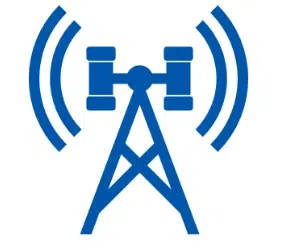Satellite internet and wireless technology can have several effects on cell towers and the broader telecommunications landscape. These effects are driven by advancements in technology, changing consumer demands, and the need for expanded connectivity. Here are some ways in which satellite internet and wireless technology impact cell towers:
- Complementary Services: Satellite internet and wireless technology are often viewed as complementary rather than competitive services. While cell towers provide wireless connectivity for mobile devices and serve as the backbone of cellular networks, satellite internet extends broadband internet access to remote and underserved areas where traditional wired infrastructure is unavailable.
- Improved Rural Connectivity: Satellite internet plays a crucial role in providing high-speed internet access to rural and remote regions. In areas with a sparse population or challenging terrain, cell tower infrastructure may be cost-prohibitive, making satellite internet a more practical solution.
- Backhaul Connectivity: Cell towers require backhaul connectivity to link them to the broader internet infrastructure. Satellite links can be used as a backhaul solution for cell towers in remote or geographically isolated areas, ensuring reliable connectivity.
- Network Redundancy: Satellite connections can serve as a backup or redundancy option for cell towers in case of terrestrial network failures or disasters. This redundancy helps maintain connectivity during emergencies.
- IoT and Remote Monitoring: Both satellite and wireless technologies support the Internet of Things (IoT) by providing connectivity for remote sensors, devices, and applications. Cell towers and satellite networks work together to enable IoT deployments, such as environmental monitoring, asset tracking, and smart agriculture.
- Expanding 5G Networks: 5G networks are designed to support a wide range of applications, including enhanced mobile broadband, IoT, and critical communications. The backhaul and transport capabilities of satellite internet can be leveraged to support the expansion of 5G networks, particularly in remote or rural areas.
- Aircraft Connectivity: Satellite technology is used for in-flight Wi-Fi on commercial aircraft. When passengers use in-flight connectivity, their devices connect to satellites, which then relay data to ground stations and may eventually be routed through terrestrial cell towers when the aircraft is close to the ground.
- Global Connectivity: Satellites offer global coverage, making them suitable for providing internet access and connectivity in remote regions and for international communication. Cell towers are primarily localized and provide coverage within specific areas.
- Interconnection Points: In some cases, cell towers can serve as interconnection points between wireless networks and satellite networks, enabling seamless handoff of data and communication between the two technologies.
While both satellite internet and wireless technology are essential for providing connectivity, they serve different purposes and address distinct connectivity needs. As technology continues to evolve, the integration and coordination between these technologies will become increasingly important in meeting the growing demand for broadband access and improved connectivity worldwide.
